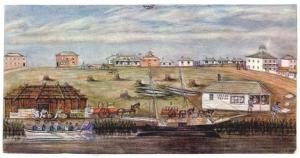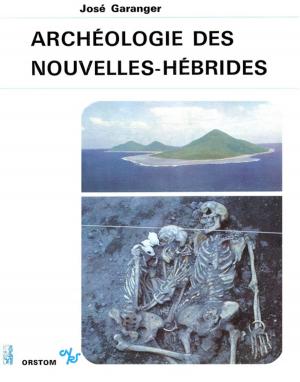| Author: | Derek Pugh | ISBN: | 9780992355876 |
| Publisher: | Derek Pugh | Publication: | January 1, 2017 |
| Imprint: | Derek Pugh | Language: | English |
| Author: | Derek Pugh |
| ISBN: | 9780992355876 |
| Publisher: | Derek Pugh |
| Publication: | January 1, 2017 |
| Imprint: | Derek Pugh |
| Language: | English |
Fort Dundas was the first outpost of Europeans in Australia's north. It was a British fortification manned by soldiers, marines and convicts, and built by them on remote Melville Island in 1824. It lasted until February, 1829, when it was abandoned and left to the termites.
The fort's purpose was twofold. Firstly, it was a physical demonstration of Britain's claim to the New Holland continent as far as longitude 129E, which excluded the Dutch and the French from starting similar colonies, and it was the first of a series of fortified locations around the coast. Secondly, it was promoted as the start of a British trading post that would become a second Singapore and compete with Batavia.
The settlement was named in a ceremony on 21 October 1824, but it was not a success. In its short existence we have tales of great privation, survival, greed, piracy, slavery, murder, kidnapping, scurvy, and battles with the Indigenous inhabitants of the islands, the Tiwi. It was also the site of the first European wedding and the birth of the first European children in northern Australia.
None of the three military commandants who managed the outpost wanted to be there and all were gratefully relieved after their posting. They left behind thirty-four dead - victims of disease, poor diet and Tiwi spears. Others died when the crews of the fort's supply ships were slaughtered and beheaded by Malay pirates on islands to the north. Two cabin boys from one of them, the Stedcombe, were enslaved by the pirates.
What happened at Fort Dundas and why it was abandoned has been largely untold. Nevertheless, it is one of the most engaging stories of nineteenth century Australia.
Fort Dundas was the first outpost of Europeans in Australia's north. It was a British fortification manned by soldiers, marines and convicts, and built by them on remote Melville Island in 1824. It lasted until February, 1829, when it was abandoned and left to the termites.
The fort's purpose was twofold. Firstly, it was a physical demonstration of Britain's claim to the New Holland continent as far as longitude 129E, which excluded the Dutch and the French from starting similar colonies, and it was the first of a series of fortified locations around the coast. Secondly, it was promoted as the start of a British trading post that would become a second Singapore and compete with Batavia.
The settlement was named in a ceremony on 21 October 1824, but it was not a success. In its short existence we have tales of great privation, survival, greed, piracy, slavery, murder, kidnapping, scurvy, and battles with the Indigenous inhabitants of the islands, the Tiwi. It was also the site of the first European wedding and the birth of the first European children in northern Australia.
None of the three military commandants who managed the outpost wanted to be there and all were gratefully relieved after their posting. They left behind thirty-four dead - victims of disease, poor diet and Tiwi spears. Others died when the crews of the fort's supply ships were slaughtered and beheaded by Malay pirates on islands to the north. Two cabin boys from one of them, the Stedcombe, were enslaved by the pirates.
What happened at Fort Dundas and why it was abandoned has been largely untold. Nevertheless, it is one of the most engaging stories of nineteenth century Australia.















